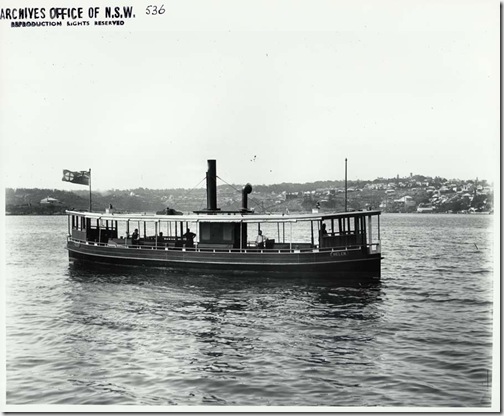Note to readers: This post appeared as a column in the Armidale Express on 31 August 2011. I am repeating the columns here with a lag because the Express columns are not on line. You can see all the columns by clicking here for 2009, here for 2010, here for 2011.
In 1915, an incident occurred in Grafton that would change the direction of New England history contributing, among other things, to the creation of the University of New England.
While there were regular separatist outbreaks in Northern New South Wales during the nineteenth century, they did not result in a sustained campaign for local self-government such as that maintained in North Queensland during the same period. However, by the end of the century a tradition of separatist agitation as a way of responding to local grievances had been well established.
The sense of country grievance was particularly strong in the Grafton area, a key centre for nineteenth century new state agitation.
The construction of the north-south inland railway had first damaged and then destroyed the traffic from the Tablelands and Slopes to the Grafton port. Attempts to gain a railway line from the Slopes and Tablelands to Grafton to help revive the trade had failed repeatedly. Grafton's sense of grievance associated with the destruction of its trade and the failure to gain an east-west rail link, was aggravated by the failure of attempts to gain a north-south coastal rail link, and by the failure of the Government over many years to take any action to remove the reef at the mouth of the Clarence, a reef that significantly hindered shipping.
 The accumulating grievances came to a head early in 1915. The Minister of Public Works in the Holman Government, Arthur Griffith, decided to remove the free steam ferry Helen from the Grafton-South Grafton run. In the absence of any bridge, the Helen was the main means of transport between Grafton and South Grafton. There was an indignant public reaction culminating in a public meeting in the Grafton Town Hall attended by about 250 people from both municipalities.
The accumulating grievances came to a head early in 1915. The Minister of Public Works in the Holman Government, Arthur Griffith, decided to remove the free steam ferry Helen from the Grafton-South Grafton run. In the absence of any bridge, the Helen was the main means of transport between Grafton and South Grafton. There was an indignant public reaction culminating in a public meeting in the Grafton Town Hall attended by about 250 people from both municipalities.
Although the meeting had been called to discuss the Helen incident, it changed character when Earle Page moved a motion suggesting that the time had now come for the North to consider separation, either alone or in connection with the southern portion of Queensland, and calling for the appointment of a committee to investigate the question and confer with other portions of the North Coast, Tablelands and Queensland.
Page was then thirty-four. Born at Grafton, he had been educated first in the Clarence and then at Sydney High School before studying medicine at Sydney University. After a little over a year as house surgeon at Royal Prince Alfred Hospital in Sydney, Page returned to the Clarence and quickly established a thriving practice together with a modern private hospital at South Grafton.
Page's travels across his practice - it covered an area of some 16,000 square kilometres - gave him a detailed knowledge of the Northern Rivers district, of its potential and problems. By 1913, when he was elected to the South Grafton Municipal Council, he was well-known in his own area. Now, with the Helen incident, began a chain of events that was to throw Page into national prominence and help give particular form to Northern history.
Page's separatist motion was carried unanimously. The committee then formed reported in April 1915. Its report, subsequently published as a pamphlet, detailed many of the arguments that were already and were to remain traditional in separatist propaganda.
The central complaint was that the North was suffering because of the centralising policies of the Sydney Government; these had retarded the progress of the state in order that the artificial progress of Sydney might be maintained. Separation was the only way to halt this process. The report then went on to recommend that the new state should include the North Coast as far south as the Hastings Range south of Kempsey, the Northern Tablelands, the Liverpool Plains and Western Slopes, and a strip of the Western Plains as far west as Bourke.
On 29 April 1915, the report was discussed at a large public meeting in Grafton which decided unanimously in favour of separation and then formed a Northern New South Wales Separation League.
The new League, with Earle Page and F. McGuren from Grafton and David Ritchie from Dorrigo as its chief propagandists, spread rapidly: by August there were twenty-two branches on the coast and an attempt was being made to extend the organisation inland. Then towards the end of 1915, the new movement vanished as fast as it had risen because of the growing impact of the war which took away its leaders, including Page himself.
This had been a grass fire, but it laid the basis for a much bigger blaze that was to burn strongly across most of the first seven decades of the twentieth century, with spot fires continuing today.
Without that blaze, we would not have the University of New England.












No comments:
Post a Comment